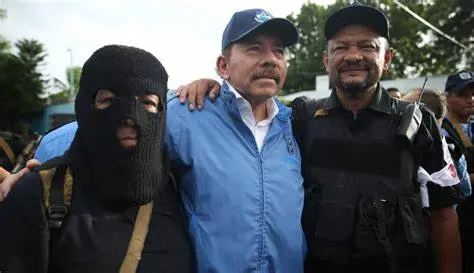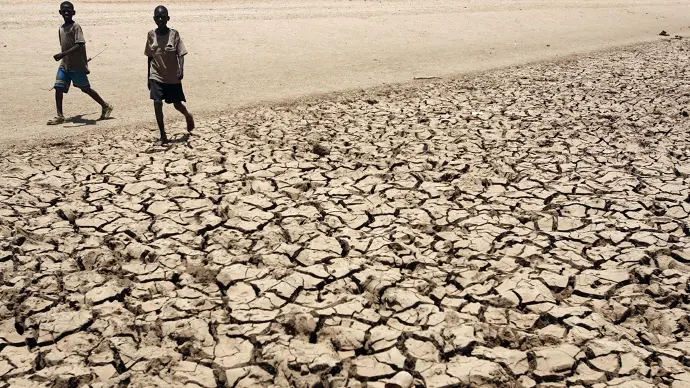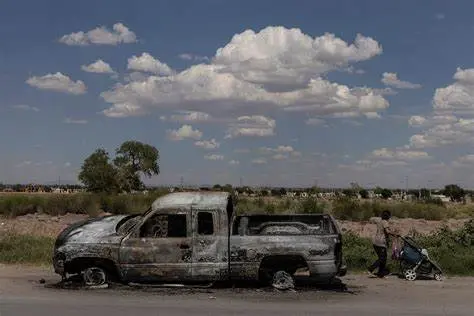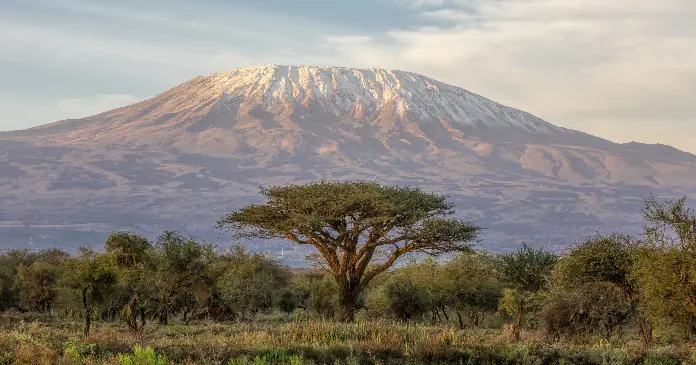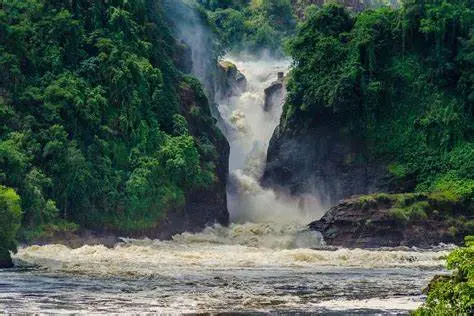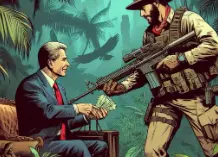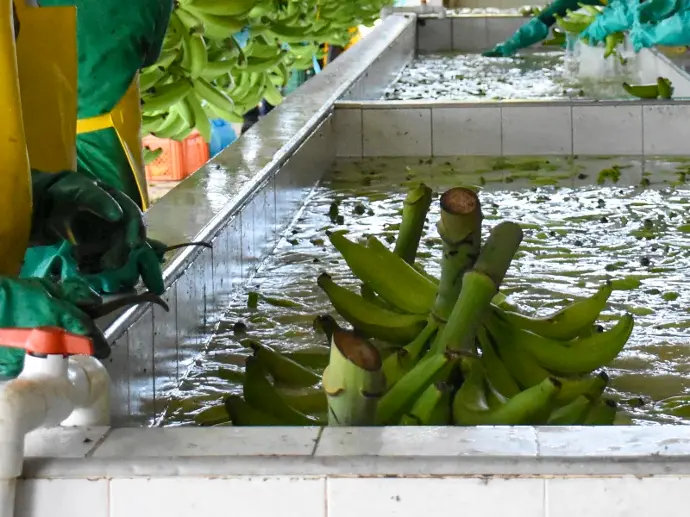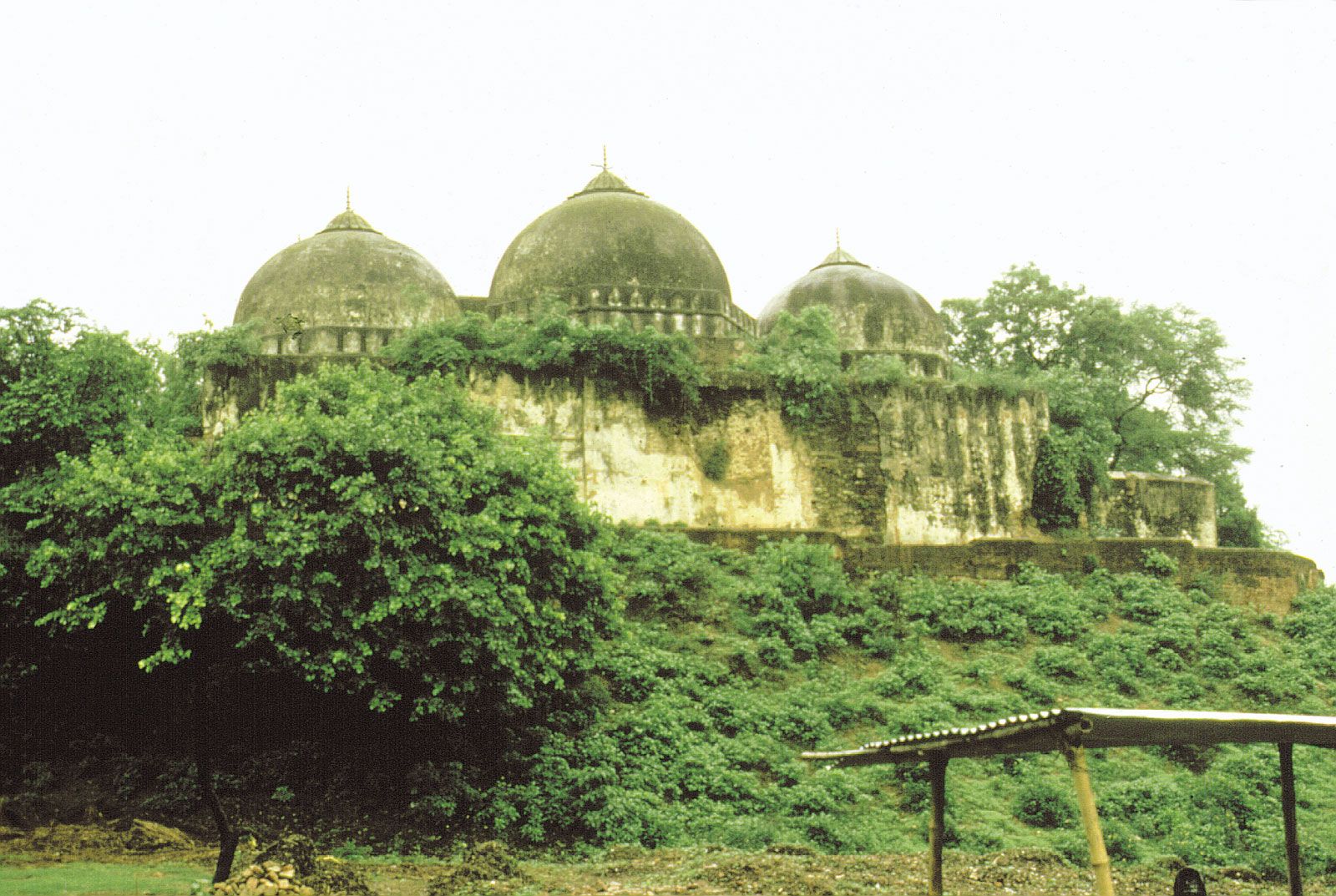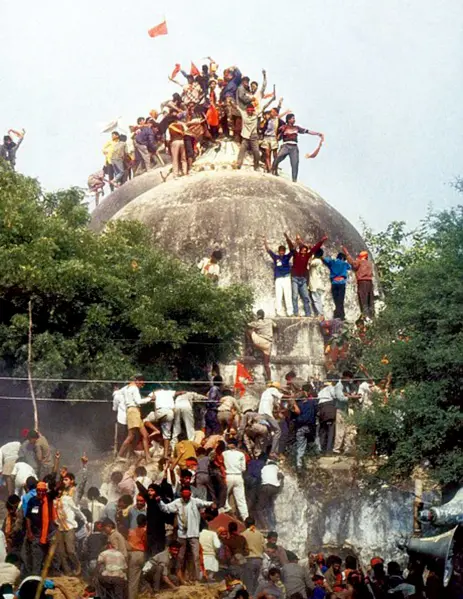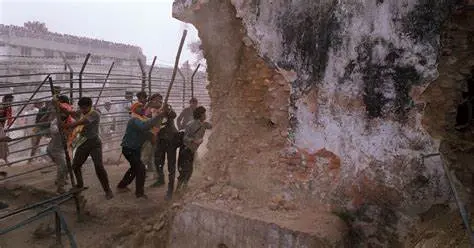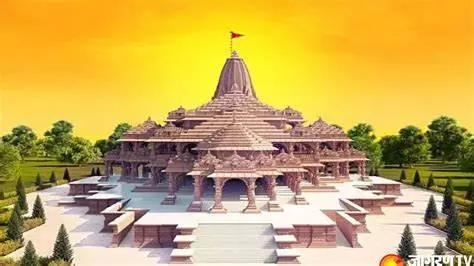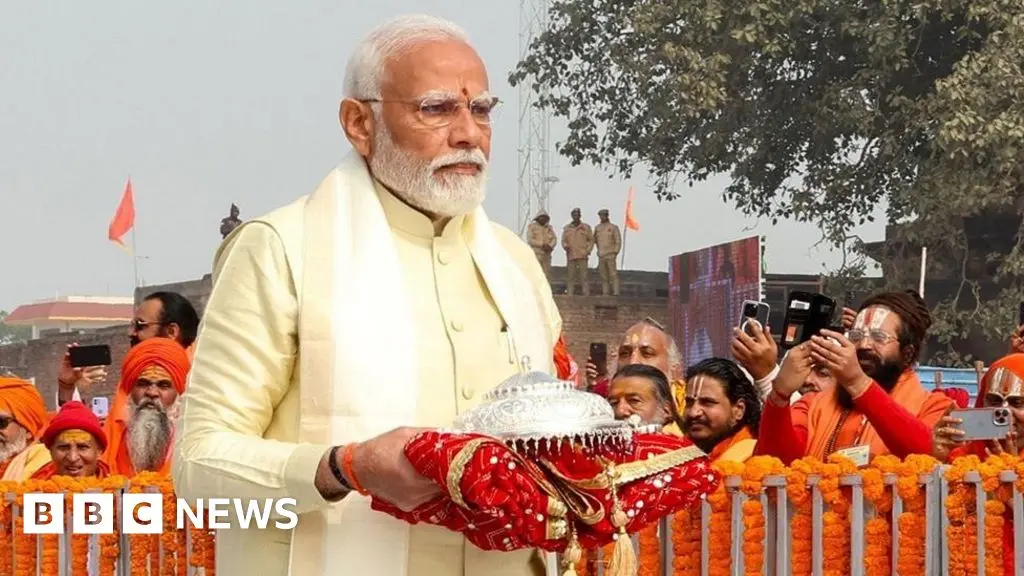Al haqiqa. Meaning the truth in Arabic, that is exactly what I have vowed to share here. now "I" has become "we". a world of 8.1 billion people can only be covered so much on one's own. That is why this will be the first issue of Al-Haqiqa to be written by varying writers, covering varying regions, stories, and people. Our fellow men are many and may we never forget their struggle. Over mountains, seas, and languages, their truth will be set free.
- Samya Sehwail, founder and editor-in-chief
Central America
The Ortega Regime: Never-Ending Crisis in Nicaragua
By Chris Gutierrez
In Central America, where a nation, rich in history and culture resides. Nicaragua has found itself in political turmoil under the leadership of President Daniel Ortega. Despite his close ties to allegations of corruption, human rights abuses, and a striking resemblance to an autocratic style of government, Ortega returned to power in 2007. Since his return, Nicaragua has not only been plunged into a state of crisis but also drawn international condemnation.
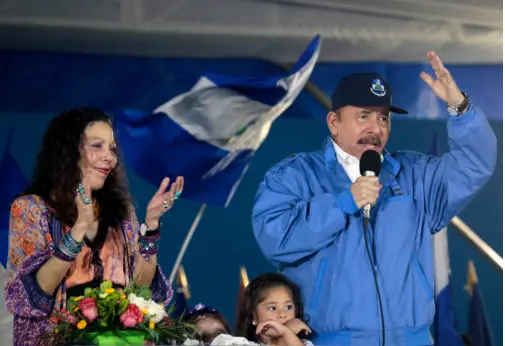
Daniel Ortega first saw his sense of spotlight under the leadership of the Sandinista National Liberation Front (FSLN), which would soon overthrow the Somoza dictatorship in 1979. Ortega’s first touch of power was prolonged for 5 years (1985 to 1990). Eventually losing power, Ortego would soon strive for a political comeback. Ultimately claiming a victory in the 2006 Nicaraguan elections, he returned to power. However, his return has not brought the levels of democracy to the country many sought.
Ortega has systematically torn down democratic institutions as a power-hungry move to solidify power. Through manipulation of electrical voting, control of the judiciary, and suppression of media, Ortega has established a firm grip on his presidency role. Nicaragua’s 2021 elections were heavily criticized, and labeled with accusations of unfairness and fraud, with many opposition leaders arrested or exiled and independent media outlets shut down.
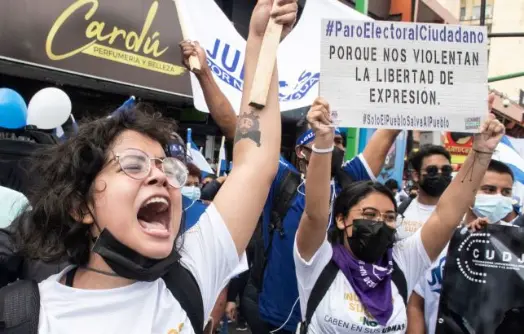
Any forms of dissent have been met with brutal repression by Ortega’s regime. Protests that sprouted in 2018 against security reforms were met by a lethal force. In total, over 300 deaths, thousands of injuries, and numerous arrests have been a result of the government's crackdown. Human Rights organizations- including Amnesty International and Human Rights Watch- have documented widespread abuses, the likes of extrajudicial killings, torture, and arbitrary detention.
Ortga’s presidency has similarly been labeled with corrupt allegations and Nucaragua’s economy has fallen victim. The Regime has been accused of abstracting public funds and engaging in nepotism. Transparency International has ranked Nicaragua amongst the most corrupt countries in the world. The economic situation has deteriorated due to mismanagement and international sanctions, causing increased poverty and emigration.
As a result, the international community has reacted with concerns and condemnations. The United States and the E.U. have imposed sanctions on Ortega and his close associations, aiming to pressure his regime in order to restore democratic norms. However, Ortega has responded stubbornly, showing no willingness to change course, using international criticism as propaganda, framing it as imperialism interference.
The Path Forward
Significant reforms are urgent if Nicaragua hopes to emerge from this crisis in one shape. Restoring democratic institutions, proper human rights, and accountability for corruption are required. We, as an international community, must continue to support Nicaraguan civil society continuing to apply diplomatic pressure on Ortega and his regime.
A Rise in Gang Violence
By Cinthya Xivir Perez
As of 2021, there has been a rise in gang violence across the Guatemalan and Mexican Border. Two of the most formidable Mexican gangs- the New Generation Jalisco Cartel and the Sinaloa Cartel are competing for control of drug, weapon, and human trafficking routes across the border. Local gang factions affiliated with these cartels have engaged in excessive violence in recent years.
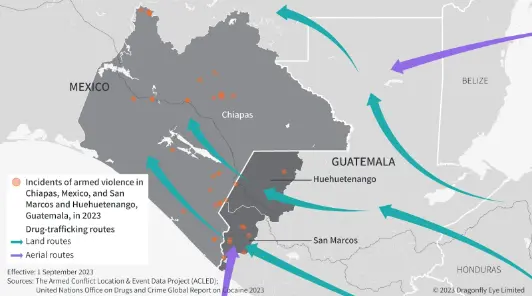
According to local press reports, there have been drive-by shootings, ambushes, and shootouts in towns and cities, including San Cristóbal de las Casas in Chiapas. However, these were largely cartel-affiliated gangs assaulting rivals or law enforcement in rural regions or on highways. Still, the risk to bystanders is rising. Gang shootouts have become more frequent in public areas, while not being expressly directed towards businesses or bystanders. Many news stories claim that gangs are deploying "heavy-caliber weapons" and "narco-tanks."
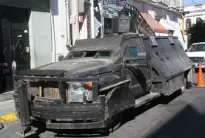
On July 1, 2024, nineteen corpses were discovered near a dump truck in a Southern Mexican region controlled by cartels, close to the Guatemalan border. The men's remains were discovered in a truck that had been left on a rural road close to the town of La Concordia in Southern Chiapas state, according to the federal public safety department. The department states that at least six of the victims carried identification documents from Guatemala. The murders seem to be connected to the violent turf wars that have broken out between the rival Cartel of Mexico and Guatemala and the Sinaloa drug cartel.
Thousands of Mexicans native to the region have fled their homes as a result of the recent spike in violence in Chiapas state. After a seven-hour dispute, residents reported cowering in their houses as bullets tore through them. More than seven hundred people had been forced to leave their villages close to the Guatemalan border. Although the military has been sent to the area, the residents claim that now that the security forces are battling the cartels, they are being caught in the crossfire. To escape the violence during the previous few days, entire families have fled their houses and crossed the nearby Angostura lake by boat. Journalists from the area claimed that their settlements now resembled abandoned ghost towns.
BRINGING LIGHT TO OPPRESSION: México Lindo y Querido, Oh How Can't They See?
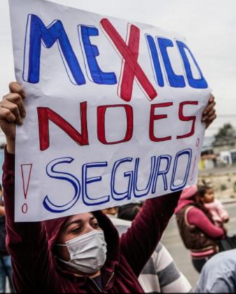
As of 2024, Mexico is ranked as one of the top 30 most dangerous countries to visit in the world. According to World Population Review, its GPI (global peace index) is only .2 points lower than North Korea, otherwise known as the country, that quite literally exists in a dystopian nightmare fit for a George Orwell novel. Furthermore, the United States Department of States itself warns against travel in the country, only listing 2 out of its 32 states as safe to visit without extra precaution, a whopping 17 as dangerous, 7 where it's best to reconsider vacation plans and 6 tourists are outright told not to visit. Among these states are Colima, Guerrero, Michoacán, Sinaloa, Tamaulipas and Zacatecas, all for some degree of armed robbery, carjacking, extortion, homicide, kidnapping, pickpocketing, assault.
Corruption with a side of Government
Yet, according to residents, besides taking basic precautions such as not flaunting money, staying in groups and avoiding shady spots, tourists are relatively safe from danger. The real threats posed are instead to the locals. If things get nasty, all they can do is turn a blind eye and hope they aren't next on a gang's list. Most residents can't escape the violence, lacking the monetary means to do so. Instead, they are the ones who have to deal with their children getting kidnapped, extortion and even homicides should they disobey the word of local gangs Not even the government is there to step in, officials more worried about siphoning away federal money into their own pockets. According to Transperencia Mexicana, even if politicians and political organizations are investigated, there never seem to be any sanctions or consequences for them.
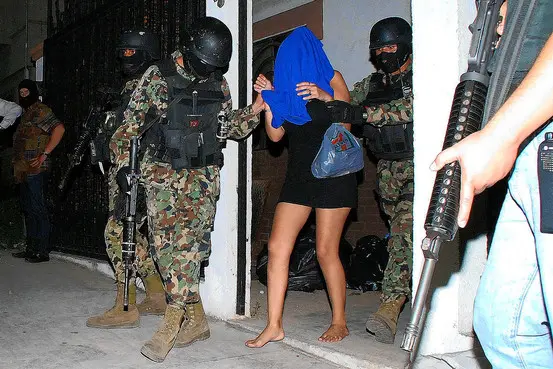
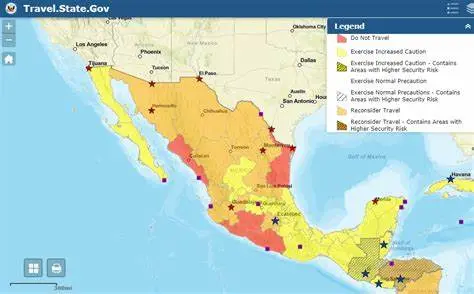
Not even the big corruption cases have resulted in definitive sentences. The case against SEGALMEX-DICONSA-LICONSA where the organization took 95 million pesos, or around $525,175.24 US dollars, never led to any concrete breakdown of corruption. This leaves Mexican citizens trapped between the mortar that is their government, and the pestle that includes gangs like Grupo Zeta or the Sinaloa Cartel. There is no way to distinguish one or the other with most residents having a deep-set distrust in both. After all, how could they not when the police seem to be just as involved in crime as the criminals, they are meant to serve justice to? Mexican President, Andres Manuel López Obrador himself, has said that the war on drugs is a US problem; not a Mexican problem
War stasis
Mexico's President has also argued against, demonizing the cartels, instead advocating for the Catholic church to go and solve disputes. Additionally, according to Reuters, when forces captured a prolific drug lord in 2019, Obrador immediately demanded his release on claims of "hugs not bullets". While it is true that humans are people regardless of what they may have done, it cannot be helped to question why these members never face justice for their wrongdoings. The Mexican people are rightfully disgusted by their own system of governing, with one anonymous restaurant owner claiming that "he is making fun of us", something that is not hard to believe when the reason often cited for Obrador's decisions is "because I want to."
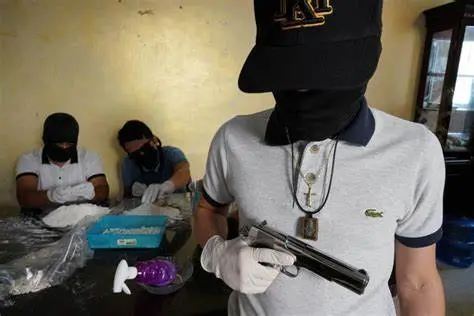
While cartels make an undeniable amount of money off their drug deals, a much larger portion of their profit actually comes out of the extorting terrorized townspeople. Locals are left with no option other than paying up protection money to the crime organizations lest their daughters be kidnapped. sons be indoctrinated, family member's heads arrive in the mailbox, or they are made an example of what happens when the cartel is defied. People are living in a constant game of tiptoeing around the subject. Stuck in a silent war against the violence.
Furthermore, Obrador has gone on to claim that the business conducted by the cartels is good for the economy! Completely ignoring the very valid concerns of his citizens about the violence, he simply stated that "the drug cartels provide jobs in regions where the Mexican government can't provide economic development. They encourage social mobility, generate revenue through drug sales, and balance trade investment deficits."
Untold Narrative: Desperate Migrants Used as Means for Violence yet Criminalized Instead of Helped
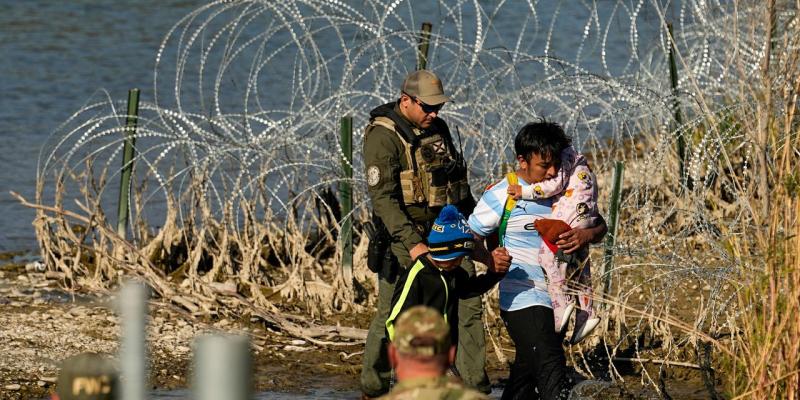
Migrants are another group that is heavily targeted by the cartels. Partly due to their desperation and their poverty level. The sad reality is that the land surrounding the US/Mexican border belongs to gangs in all but legal names. Due to a poor illegal immigration policy by the United States, many people seeking entry into the nation will pay designated traffickers called Coyotes to get them in. The Coyotes are paid money to get a person into a designated location, however, most of them are employed by the cartel and it is very much an illegal service. This means that there is no guarantee that a) the person gets across alive or safely b) they won't charge more money at any point c) they won't sell the person to any human trafficking ring. Yet this is the risk that over 2.2 million people were willing to take in 2023 according to the Committee of Homeland Security. Recently, the Coyote's tactic has evolved from simply smuggling people across, to hiding drugs on migrants or paying US citizens to take illegal substances across. It is too easy to place all of the blame for drugs on the immigrants while ignoring the large systemic issues at play.
East Africa
Climate Changes Effect on East Africa
By Nicole Wan
The Land
East Africa is home to multiple diverse countries such as Kenya, Tanzania, Uganda, Rwanda, Burundi, and parts of Ethiopia and Somalia. East Africa is also home to an even more diverse landscape: not only is East Africa famous for containing the two highest mountains in Africa, Mount Kilimanjaro and Mount Kenya, but it is also notable for containing lush coastal areas, plateaus, deserts, grasslands, and highlands. The interplay of this region’s tropical weather patterns, varying altitudes, and geological formations creates a mosaic of environments that support an extraordinary array of life and rich biodiversity. In fact, according to The World Wide Fund for Nature, “Africa contains about one-fifth of all known species of plants, mammals, and birds, as well as one-sixth of amphibians and reptiles”.
THE CLIMATE CRISIS
In 2022, disaster strikes when the East Africa region experienced the longest and most devastating drought in over 40 years, leaving millions in heavily impacted areas such as Somalia, Ethiopia, and Kenya facing severe food insecurity. However, the issue of global warming has been around for much longer. In 2006, Kenya’s government issued a state of emergency after a two and a half year drought reduced harvests. With growing temperature due to man-made climate change in past years, scarce resources for food and water continue to deplete and increase political tensions in regions of East Africa.
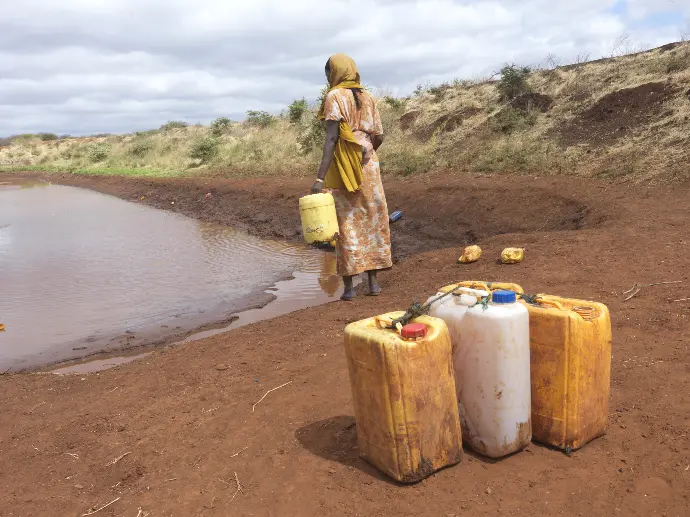

GROWING TEMPERATURES
According to The Select Committee on Energy Independence and Global Warming, East Africa is expected to experience temperature increases up to 5.4 to 7.3 degrees Fahrenheit by the year 2080, increasing at a rate 1.5x faster than the rest of the world. Rapid deterioration of the environment heightens many existing issues such as lacking infrastructure that limits citizens’ access to healthcare, education, employment opportunities, and social wellfare as well as political instability as conflict results over the rationing of food and supplies between countries. Most crucially, climate change reduces the quality of life by increasing famine and disease, which can be difficult to recover from for the people of East Africa for decades to come.
Gender Scars in Sudan
By Lorena Magana
Gender Based Violence (GBV) has become a violent tactic used in war, in Sudan, targeted mostly against women. With the start of the 2004 civil war in Sudan, also known as the Darfur genocide, soldiers took advantage of vulnerable women. This fight was between the Sudanese Armed Forces and the Janjaweed forces. In total 400,000 were affected including being displaced, killed, and women being raped. The horrid actions of the janjaweed forces were not just targeted at women, but also at children and the physical brutality to infants. Since, the Darfur genocide women have lived in fear, they were scared that history would repeat itself.
On April 15, 2023, a civil war broke out in Sudan. This conflict is a battle of power for state control between the Sudanese Armed Forces (SAF) and Rapid Support Forces (RSF). Women in Non-Arab communities in the West Darfur area are being kept in sexual slavery, forced into prostitution, and sold into markets. The RSF is raping women to impregnate them add more Arabs to non-arab communities, and strip them away from the symbol of honor and purity.
A then 17-year-old Aisha, who sadly lost both her parents, is a victim of GBV. During the tense moments of war Aisha would only leave her home for essentials and soldiers would come to her house every once in a while to make sure no one was hiding. On a particular house check soldiers threatened Aisha not to say a word and one by one the soldiers raped Aiasha. This horrible act would then be repeated the next day. After fleeing Aisha found out she was pregnant, with no money or support, Aisha struggled with her mental health and would contemplate suicide. Victims in these cases have no legal or health support due to police stations shutting down and 80% of healthcare facilities shutting down due to the conflict. They are left to carry pregnancies and trauma.
Middle East
Palestinians Under Israeli Occupation Face Trauma that Will Stick for Generations
By Sara Elazab
“All of us in Gaza need a psychiatrist,” comments Hala Taher, a Gazan sharing her life on social media living under Israel’s brutality since October 7th, 2023, echoing the concerns that the conditions that Palestinians face under occupation will have lasting effects on them and on generations to come.
Since October 7th, 2023, the number of bombs dropped on Palestinians in Gaza has surpassed the intensity of the bombing of Hiroshima, according to Scientists for Global Responsibility. This intensive bombing, causing innumerable deaths and injuries, have also caused a lot of trauma amongst its victims.
In posts made by Gazans on social media, one thing is constant: the buzzing sound of drones in the background, signifying the nonstop nature of Israel’s violence. This, along with the constant bombardment of Gaza, embeds trauma in everyone who experiences it. The constant threat of attack looms over the population.
For those caught in a bombardment, they face shell shock, a specific type of Post Traumatic Stress Disorder, which according to Healthline is “a collection of symptoms, such as fear, anxiety, and panic, that can result from constant exposure to explosions and other intense threats over a long period.”
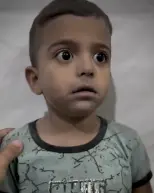
The image of a young child by the name of Mohamed circulated on the internet depicts this phenomenon after bombs dropped on his neighborhood. The young boy’s eyes are wide open as he trembles until he finally breaks down in tears.
This exact look is similar to the look of released Palestinian prisoners, such as Badr Dahlan, who have been tortured by Israeli Defense Forces soldiers.

Dahlan, after spending approximately one month in an Israeli prison, with difficulty, describes the torture he had to endure. His account echoes the testimony of Palestinian civilians imprisoned in Sde Teiman Detention Camp, who reported being “punched, kicked and beaten with batons, rifle butts and a hand-held metal detector while in custody” and “without the ability to plead their cases to a judge for up to 75 days” according to the New York Times.
While spectators of Israeli violence can see the trauma created by bombardment and torture, there still remains the invisible trauma of collecting a loved one’s body parts, grieving the loss of an entire family, and of the starvation forcing a majority of Gazans to endure “famine-like conditions” as reported by the World Food Programme.
Evidence from previous Israeli attacks on Gaza proves the far reaching capabilities of such PTSD. According to a study by Mohamed A. S. Altawil, Aiman El-Asam, and Ameerah Khadaroo of Middle East Current Psychiatry where they tested Palestinians for PTSD,
at least 97.2% of participants had experienced at least 6 traumatic experiences up to the year 2006 and 100% of the participants were exposed to traumas in 2021.
This led them to the conclusion “that Palestinian children, youth, adults and their families in the Gaza Strip are continually at a huge risk of developing PTSD and other psychological problems.”
This trauma is one that will present itself through generations of Palestinians. "Children and grandchildren of original trauma survivors can internalize their elders' traumatic experiences through various mechanisms, such as narratives, behavioral patterns, emotional responses, and socialization processes,” the Palestinian Children’s Relief Fund reports.
The Middle East Psychiatry study concludes that “this PTSD or CTSD cannot be changed unless the root of the problem is solved by ending the [76] years of living under occupation,” confirming the brutal Israeli violence, that will leave its mark on Palestinians as long as their occupation, apartheid, and genocide continues.
South America
Blood Bananas
By Tlanextli Sanchez
On Monday, June 10, a federal jury in Florida ruled fruit brand Chiquita liable for funding a right-wing paramilitary group in Colombia between 1997 and 2004. However, the case against the Chiquita company and the United Self-Defense Groups of Colombia (Autodefensas Unidas de Colombia, AUC) has been open for 17 years. During this time the AUC has committed over a thousand murders leaving countless innocent Colombian families devastated. Chiquita is liable for illegally funding the AUC with over $1.7 million. This financial support helped to fuel the group whose intentions were to suppress the lower working classes of Colombia and bring upper-class and wealthy citizens to power and control.
The paramilitaries used scare tactics on Colombian citizens. They often kidnapped, tortured, and murdered left-wingers, labor union leaders, and suspected rebels to ensure right-winged militaries and elites had full control over the areas they were stationed within. Within the last four years of the case, the AUC was marked a terrorist organization yet the Chiquita company continued to fund the group. During this time Chiquita made nearly $49.4 million in profits from its Colombian banana operations.
After 17 years Chiquita has finally pled guilty and paid a $25 million settlement. The families of the 8 victims’ deaths that the company was deemed liable for were also awarded nearly $38.8 million in damages for their lost ones. On top of this, a second trial is scheduled to begin on July 15 to tackle other victim’s claims against Chiquita. However, even with the current verdict, the company is working to appeal the ruling as they believe there is no legal basis for the claims that have been made. Aside from Chiquita’s want for an appeal many still see this as a huge legal victory due to the company’s troubling past with corruption and massacres. Not only this but bringing light to corporate corruption and the danger it carries gives hope to activists all around the globe. Corporate power is nothing new and is a long way from being defeated but this verdict proves it can happen as people become more aware of the damages being done by those feeding into corporate greed.
The Darien Jungle Crisis
By Angelina Gan
Tensions are mounting as Panama and Colombia find themselves at odds over the contentious issue of migration through the Darien jungle. Although the movement in and out of the Darien jungle has been going on for years, the dense, remote region has become a focal point of debate as Panama seeks international assistance to manage the influx of migrants crossing from Colombia, citing humanitarian concerns and security risks.
What is the Darien Jungle?
The Darien jungle, a rugged expanse spanning the Panama-Colombia border, has long been a challenging transit route for migrants seeking to reach North America. It is the only stretch of land that connects South America to Central America, making it the only option for many who want to reach the other side. The jungle lacks the infrastructure and services deeming it unsafe for travel: there are no roads, bridges, or maps, exposing migrants to harsh conditions and making it a very dangerous and treacherous journey. Its inhabitants are thinly dispersed, the few residing in the Darien jungle being Indigenous communities and nefarious gangs. Coupled with the extensive jungle canopy, migrants and all others who enter risk death crossing the jungle. Recent years have seen a surge in the number of travelers attempting the perilous journey, often fleeing poverty, violence, and political instability in South America, bringing greater attention to the dangers of the Darien jungle. More than 500,000 people successfully crossed the jungle by foot in the year 2023, with the number expected to continue to increase as the years go on. In response to this situation, the Panamanian and Colombian governments have come together to discuss the migration through the Darien jungle, prompting attention from international governments who have also expressed their interest in participating in the Darien jungle discussions.
Panama and Colombia’s Response
Panama has voiced growing alarm over the situation, describing it as a humanitarian crisis. The country contends that its limited resources are strained by the influx of migrants, many of whom arrive in dire need of medical attention and shelter. Officials in Panama have urged for international support, highlighting the need for assistance in managing the humanitarian and logistical challenges posed by the migration flow. In contrast, Colombia has emphasized its efforts to address the root causes of migration, including poverty and insecurity within its borders. Colombian authorities argue that migration through the Darien jungle reflects regional and global challenges that require comprehensive solutions, including economic development and international cooperation.
Humanitarian Concerns
Human rights organizations have raised concerns about the safety of migrants transiting through the Darien jungle. Humanitarian organizations emphasize the risks of exploitation, violence, and human trafficking faced by migrants, often families and minors, worsening their already vulnerable state. Not only this, migrants who chose to cross the Darien gap are faced with harsh environmental conditions, including steep terrain, unpredictable weather, and dangerous animals. Although there are all of these dangers lurking through the jungle, there is no shelter, medical care, or access to clean water nearby, further intensifying the need for this urgent matter to be discussed by the respective governments.
Future Outlook
As the debate intensifies, the focus remains on finding a balanced approach that respects the rights of migrants while addressing the legitimate concerns of both Panama and Colombia. The outcome of ongoing diplomatic efforts and international interventions will likely shape the future of migration through the Darien jungle and broader regional cooperation on migration issues. While there will always be economic, political, and environmental hardships driving migrant patterns from South America to Central America, there are many movements sprouting in an attempt to bring international spotlight to this issue and drive a collective effort to improve the conditions of this route. Moving forward, Panamanian and Colombian governments will be coordinating with international governments, organizations, and agencies to alleviate the dire situation and ensure that the safety of migrants traveling along the Darien gap is of top priority. The Panama-Colombia-Darien jungle route continues to be a flashpoint in the larger debate on migration and regional cooperation in the Americas. With humanitarian, security, and diplomatic dimensions at play, finding a sustainable resolution remains a pressing challenge for all involved parties.
South Asia
Oppression's Election
By Samya Sehwail
2024 is the year of global elections. France, the United Kingdom, and of course, America. However, there is one democratic nation that is dangerously overlooked: India. With 1.4 billion people, India is undisputedly the world's largest democracy. Often, the South Asian nation is not thought of as a global influence, but in recent years, the country has exponentially increased its international power. This success is largely credited to Prime Minister Narendra Modi.
Modi has been in power for the past 10 years, first being sworn in on May 26, 2014, as a member of the Bharatiya Janata Party (BJP). He was sworn in for his third five-year term on June 10, 2024, with an approval rating of 70% - the highest rating for a world leader. It is not much of a surprise, as there is a lot to like about Modi. He is charming, an effective speaker, and has made a real impact. Modi ensured the vaccine was available for his citizens during the COVID-19 pandemic, was in charge when India landed its first spacecraft on the moon, and launched a program providing grain to the unfortunate of the nation. The beloved prime minister is exactly that: beloved by nearly all of India’s many castes.
Global Leader Approval Rating (%)
Modi is the product of an inspirational coming-up story as he himself was born into a low caste but worked himself up to the position of the first-ever three-termed prime minister. India has historically been severely divided by the caste system and while it has been outlawed since 1950, the divisions are omnipresent. Although Narendra Modi has traded Indian division from caste to religion. Nearly 79% of Indians are Hindu while 14.6% are Muslim. The majority vastly outnumbers the Muslim population, but this is India. 14.6% is still 200 million people. That is 2/3 of America’s entire population. 200 million people are living in constant reminder that they are increasingly seen as outsiders or “infiltrators” - an actual word used by their own prime minister. While Muslims are the minority, they are not new.
Ancestors of modern-day Indians first began identifying themselves as followers of Islam in 712 C.E. 1311 years ago. There have been notorious struggles between Hindus and Muslims in India throughout the time but there was co-existence. Modi’s reign of power along with fellow members of the BJP have created an environment where such directed Islamophobia is normal to the point of segregation. Landlords refuse to let Muslims rent, real estate agents ask possible buyers if they are followers of the faith, and children are being attacked so badly they are forced to be homeschooled for their own safety. This is the case for Reema Ahmed's now 16-year-old son. The boy was only nine when he, a born Indian coming from an Indian family, was called a “Pakistani terrorist” and his ears rang with the order of his peers cheering to kill him. Ahmed recounts that this blatant and taught Islamophobia was never like this when she grew up, a sentiment many her age and older share while the youth are unable to.
Terrorist! Kill him!!
To say there was no Islamophobia before Modi would be a blatant lie. There were pro-Hindu mobs as there are extremists of every belief in every corner of the world. Although it would also be false to say that this vile behavior has not increased in part due to the support of the reigning party. In 1992, a Hindu mob rampaged and destroyed a mosque which resulted in a chain of riots causing 2,000 people, mostly Muslim, being killed. In January of this year, right on top of the site of lingering pain, a $200 million Hindu temple was personally consecrated by Modi. A dollar for each Muslim to cover up their legacy. To cover up the crimes of the Hindu nationalist ideology that is promoted by the BJP through videos depicting Muslims as parasites, law changes forcing a choice between one’s faith or nationality, and fiery speeches spreading blatant anti-Muslim propaganda.
The Transformation of the Barbi Masjid to Ayodhya Ram temple
Obviously, while Muslims may be the largest minority in India, they are certainly not the only ones and especially not the only ones targeted by Modi’s government. It was in 2018 that India’s so-called “Watergate” occurred. 16 outspoken anti-Modi advocates were arrested for supposed plans to assassinate the prime minister and conspiracy against the government. The evidence was damning. Letters and call minutes of terrorism and attack plans against the Modi government were more than enough to back up the crimes labeled against the arrested. The incarcerated 16 men and women were union leaders and members, lawyers, professors, actors, and an elderly Jesuit priest who ended up passing in a jail cell.
They all denied the accusations, even with the appearance of the evidence. However, those letters were the ones found by the police. Outside experts found the guilty were in fact not local actors but rather the Modi government itself. Digital forensics have traced tampering back to police as files were planted on their computers and then the next day, the accused were arrested. The blatant attempt to remove any opposition against Modi has received outrage from human rights groups, Catholic cardinals and bishops, and the United Nations. There were no plans of terrorism but plans of suppression.
Narendra Modi is no doubt beloved by his people. He is a champion of overcoming adversity, a beacon of change, and Indian excellence. But as stated prior, his people. India has become a safe space for Hindu nationalism and a landmine of hate for minorities. The largest democracy in the world is yet another five years closer to a religious authoritarian state with Narendra Modi at its head.

